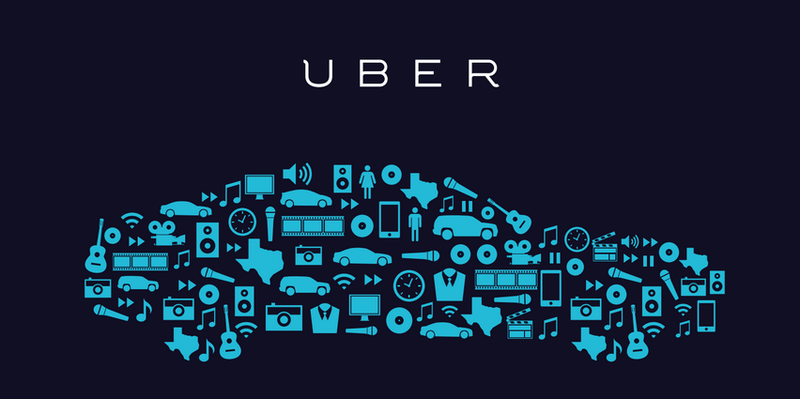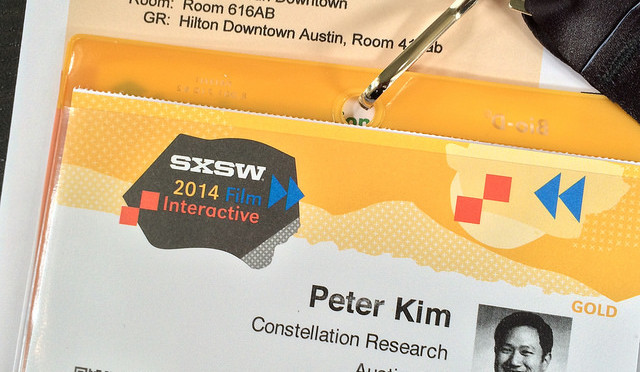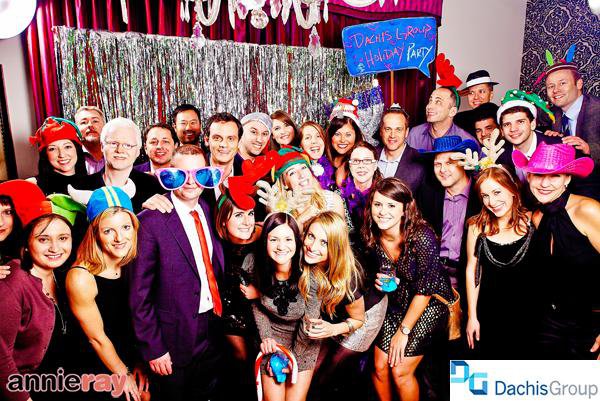
A FIRST-PERSON JOURNEY INTO THE COLLABORATIVE ECONOMY
I’ve been keeping an eye on the rise of the “collaborative economy.” In a nutshell, I see it as a progression of social business, where individuals use technology to harness cultural trends and change commercial market dynamics. But rather than just read and write about this new movement, I wanted to experience it for myself. After all, experiencing is believing.

FACEBOOK ADVERTISING WORKS
It started with an ad on Facebook. You know, the kind that stands out because it’s in the middle of your newsfeed and references a couple of your friends who have liked the brand’s page, but probably have no idea that their profiles are being referenced for this particular message. In this case, I kept seeing an ad for Uber related to SXSW: drivers wanted!
I’ve been using Uber as a passenger for about a year, spending $443 on rides mostly in New York. The convenience is unbeatable, especially when you need a specific type of vehicle. For example, I called my first Uber ride when I was by myself and needed a large enough vehicle to transport six boxes of workshop materials from the Meatpacking District to the office.
So I clicked on the Facebook ad and signed up to become an uberX driver during SXSW. The application consisted of a background check, a 30-minute online training session, and upload of license, registration, and proof of auto insurance. I assume that all checked out, because I was invited to an orientation session to pick up my phone and get activated as a driver.
BUT WHAT IF SOMEONE THROWS UP IN MY CAR?
I walked over to the first offered orientation session, which was a few blocks away from my (soon-to-be-former) office. There were two guys in a conference room, part of the activation team based out of DC. Each seat at the table had a padded envelope, paperwork, and pen; I sat down and began reviewing the driver contract. The young man next to me started photographing the pages with his iPhone. One of the Uber guys said, “hey, you can’t do that.” Young guy: “but my mom would be really disappointed if I signed this without consulting a lawyer first.” Uber guy: “don’t worry, it’s just standard legalese.” The young guy stopped taking pictures and signed.
For the most part, it was a pretty straightforward agreement making clear that the executor was 1) not becoming an Uber employee and 2) not going to discuss how the system worked, especially with the media. The contract was primarily in place to protect trade secrets, as we would be using a custom software application. Moreover, Uber and their marketing promotions partner had no intention of violating Austin’s ground transportation city ordinance, as volunteers would be paid by a third party marketing promotions firm.
I looked around while waiting to finalize my application. One guy was having trouble clarifying some issues. “But does your car have commercial license plates? If so, you can’t drive that car as an uberX.” Another guy had on a Roto-Rooter shirt; hopefully for his passengers he wasn’t going to be leaving straight from his day job to drive people around. Another woman came in and said in a breezy tone, “I saw your ad on Craigslist!”
My documents were verified pretty quickly and the discussion was direct. Did I take the online test? “Yes and I passed.” Okay, here’s your phone. Any questions? “Actually, yes.”
- “What if I arrive to pick someone up and they want to squeeze six people in my car?” You can tell them you can only fit four.
- “Since the service is free, what if someone wants to be driven back to their hotel in Round Rock?” You can call them to verify their destination and if it’s someplace crazy, you can decline the trip.
- “What if someone throws up in the back of my car?” Save the receipt from the cleaning and we’ll reimburse you.
- “Umm…” Anything else? Just call or email us.

LET’S RIDE
A week later, I was set up and ready to drive. UberX service began on Thursday evening at 5 pm, the day before SXSW started. I finally got out of my house, on the road, and heading downtown at about 7. I figured I’d give a couple of rides and then stop by a few of the opening night parties that were on my calendar.
I turned on the iPhone that served as the dispatch device. After opening the driver app and taking a few minutes to register, the madness began. I started getting pickup alerts from all over the city. 24th Street. Barton Hills. Congress Avenue. I thought there was no way I could be the closest available driver for some of these requests, but later on I would be able to guess why — the demand for cars was far greater than supply of drivers.
Ride 1
I picked up my first ride outside of Civitas Learning on 5th Street. Capital Factory had organized a “startup crawl” at various startup offices around the city and a couple of venues were on the outer reaches of the downtown area. Four guys piled in my car to be taken back to headquarters. They had never used Uber before and were all part of local startups, except for the one who worked at Tocquigny. It was a quick and easy one mile, eight minute trip.
Ride 2
I picked up my second ride outside of Speakeasy, a group of three guys who were also on the startup crawl, one of whom worked at FeedMagnet. They were heading to the other startup crawl on the outer edge of the map; a hassle to walk, but a pretty quick drive. After I dropped them off, there was a minivan taxi stopped in front of me that refused to move. I got out of my car after a few minutes to talk to the taxi driver, with five cars waiting in line behind me. The driver rolled down his window and gave me a blank look and I explained that he was blocking traffic. It appeared that he was having a problem processing a credit card; without saying a word to me, he rolls up the window, the passengers close the sliding door, and as I get back in my car, he finally pulls forward and out of the way so all of us can drive past.
I should’ve stopped then as I had originally planned, but there was something energizing about the experience. It certainly wasn’t about the money. The rides were short, the service seemed useful, and the riders seemed grateful to have a free ride. Then…
ARE YOU A CEO OR SOMETHING?
Ride 3
I headed back to the center of downtown to park my car and go offline for the night. But then a ping came in that was just two blocks away…so I answered the call. I picked up my third ride at the corner of 7th & Congress right at the Roaring Fork. He had a duffel bag and was the first of many riders going to or coming from an AirBnB. As we drove over to the east side, he told me about how he worked at a social TV startup and had made the mistake of flying into Houston instead of Austin. He wasn’t a huge fan of Uber, but taxis were impossible to find. When I told him the ride was free, he was in disbelief; as someone coming from New York, he had just assumed that the service would work like it did back home. As we pulled up to the apartment complex where he was staying, he asked why I was driving, because I didn’t seem like a regular driver…”I thought you were a CEO or something when we started talking!”
WE WOULD GLADLY PAY TO HAVE MORE CARS AVAILABLE
Ride 4
Not being able to find a taxi became another recurring theme during SXSW. I decided to take one final trip before logging out and I had a momentary sense of regret: the rider was downtown and needed a ride to her hotel, the Westin at the Domain. It wasn’t very far away in absolute terms, as Austin is a fairly small city. However, it was certainly felt like one of those situations I asked about in orientation where someone might ask to be driven to a faraway place. I decided to pick up the rider — actually two sisters, one who worked at Google and the other at Yahoo — and make this my final ride.
They were from the Bay Area and told me that they had tried various methods of finding a car: calling taxi dispatch phone numbers, using the Hail-a-Cab app, and repeatedly calling for Ubers. While getting an uberX ride for free was nice, they both agreed that they would gladly have paid for the ride if that meant that more cars were available and in service. When you’re on the road, you don’t want to be stranded not knowing how you’ll make it back to your hotel…or waiting indefinitely for a taxi to pick you up.
BIRDS OF A FEATHER FLOCK TOGETHER
Ride 5
On Friday, after getting some work done and attending a corporate brunch, I decided to go online on my way back into the city. I picked up a couple of guys on the east side of town from a small house. I asked them if they were staying at an AirBnb…yes. And coincidentally, they both worked for AirBnB. In the collaborative economy, birds of a feather flock together. I gave them a ride over to the southwestern suburbs, dropping them off at Tacodeli.
DID WE JUST SEE THE START OF SOMETHING AWFUL?
Ride 6
I was out east past the airport for personal reasons on Saturday morning and decided to go online while I drove back in. Again, a pickup from an AirBnB on the east side. I define the “east side” of Austin as east of Interstate 35 where many of the neighborhoods are in transition/early stages of gentrification. I picked up a rider from a small house located in a neighborhood that I’d never been in before…for good reason. My rider was going to the convention center and as I looped around the narrow side streets to get back on a main road, a black SUV stopped, a man jumped out of the passenger side, and ran off into the woods, under the elevated roadway near the train tracks. At first I thought he was going to relieve himself…but then he stopped and was looking for something.
We drove on and I joked with my rider, who was a strategist at ChiatDay attending her first SXSW, about how we had just seen the start of something illegal. She told me about how she had walked home from downtown the night before. It’s not a terribly long walk — only about three miles — but it’s not the nicest part of town to be walking through alone and drunk, late at night. So why did she walk? Because she couldn’t find a taxi the night before or get an available Uber…so she started walking.
Later that evening, I met someone who lived a block away from where I had picked up my rider…who told me that a few years prior, a dead body had been discovered in those woods. Yikes.
IT’S A MIRACLE YOU SHOWED UP
Ride 7
I was under the weather and busy with work, so I didn’t give another ride until Wednesday morning. As I was driving towards downtown, I got a ping from a neighborhood and swung by a house (another AirBnB) where three people were waiting outside. They work at Patagonia and were heading to the airport to fly home, but the taxi they had reserved the night before decided to not show up. Upon calling the company, they said the best they could do (despite the prior reservation) was to get a car there within an hour…well beyond their flight’s departure time. One of them decided to try Uber and luckily was able to secure a ride. “It’s a miracle you showed up.” Coincidentally, I had been reading a field report in the latest Patagonia catalog the day before. They expressed their gratitude by giving me a discount coupon and hopefully made it on time for the flight to Los Angeles.
Ride 8
Probably the most mellow ride of all. A group of four Brits staying at an AirBnB on the east side. They worked for Playstation and had flown over on the new British Airways nonstop 787 service from London. Today, they were heading in separate directions with two flying west to SF and two east to the UK. However, the first order of business was to stop by Magnolia Cafe for a proper Austin brunch.
Ride 9
My last ride of SXSW was my first passenger who was in town for Music, not Interactive. She was the manager of a band from North Carolina called Messenger Down and staying at a friend’s apartment. She told me that all bands are on YouTube, Facebook is a necessary evil, and Tumblr is increasingly the place for bands to be. As I dropped her off and told her about the static between Austin and Uber, she said, “don’t worry. I drive uberX in Charlotte and I know the deal.”
As I was waiting to turn at a red light heading back to my parking garage, a taxi starts honking at me. I point out the window to a sign on the traffic light that reads “NO TURN ON RED, 7 AM – 7 PM, MON – FRI.” At the next light I roll down my window and ask the taxi driver why he was honking at me. “Those rules don’t apply because it’s a special day today.” I told him to be more patient and we both drove away.
LOOKING BACK ON THE ROAD TRAVELED
SXSW is a huge conference and attendees have solved the hotel room shortage by turning to AirBnB. But when it comes to ground transportation, there was much more rider demand than hired car supply, due in part to the city’s regulations. Taxis, the beneficiaries of from government intervention, were unreliable (e.g. not showing up when called), often unavailable, and their drivers don’t seem like the most pleasant people to ride with.
A simple market dynamic in play: with constrained supply and high demand, the equilibrium price of a ride rose and many people complained about surge pricing. Microeconomics 101. Watch for this to creep deeper into society as more businesses and buyers realize this is how free enterprise works, in online auctions, travel pricing, and coming soon to baseball seating.
All of the people who rode with me were cordial and willing to chat, most likely due to SXSW. Otherwise I’m not sure that either they or I would’ve actually enjoyed this experience. As I was waiting in traffic, I was reminded of one reason I enjoy living in Austin more than Boston: traffic.
If you haven’t yet tried Uber, here’s a referral code to that will get you $10 off your first ride: https://uber.com/invite/uberpkim
Lessons learned, phone returned, and I got what I wanted out of my uberX experience — a look into the collaborative economy from the driver’s seat.

















